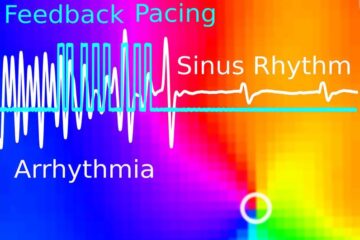Scientists determine structure of brain receptor implicated in epilepsy and PMT

The University of Cambridge team, in collaboration with colleagues at Aston University and the University of Alberta, have determined the arrangement of the constituent parts of an uncommon but important type of GABA receptor in the brain. GABAA receptors in the central nervous system play important roles in the body's response to gamma-aminobutyric acid (GABA), a chemical used by the brain to control certain functions. By understanding how the receptors' sub-units are arranged, scientists may now be able to develop drugs to block or stimulate them, providing hope for sufferers of a range of conditions.
Different types of GABAA receptor have been shown to play various roles in the body's control of behaviour and development. The Cambridge scientists are the first to determine the structure of a type of GABAA receptor containing the so-called delta sub-unit. This receptor type is found in small numbers in the body but is thought to be disproportionately important in controlling our state of consciousness; it is highly sensitive to anaesthetics, and has been linked to epilepsy and pre-menstrual tension, and to the body's response to alcohol.
The team used an atomic force microscope to detect the receptors. They applied tags to the receptors that bind to different sub-units. These can then be identified with the microscope, which scans a probe over the surface of a sample. By identifying the tags the team could identify where the various sub-units were located. Armed with this information, researchers can now build detailed models of the receptor which can be used to develop drugs to intervene in the signals that it receives.
Dr Mike Edwardson, who led the research team, said: “This type of GABA receptor plays a crucial role in the body's response to a range of stimuli. Scientists think that when there is a problem in the signalling, conditions such as epilepsy and PMT can occur. Now we have identified the detailed structure of the receptor we are in a better position to design drugs that bind to it.”
Professor Nigel Brown, BBSRC Director of Science and Technology, commented: “Basic bioscience research has a crucial role to play in understanding conditions that affect the health and quality of life for millions of people. If we learn the detailed mechanisms by which the body functions, medical scientists and the pharmaceutical industry can develop treatments to intervene when it goes wrong.”
VIDEO FOOTAGE OF DR MIKE EDWARDSON EXPLAINING THIS RESEARCH IS AVAILABLE FOR MEDIA USE – DOWNLOAD FROM:
http://www.bbsrc.ac.uk/media/releases/2008/080307_brain_epilepsy_pmt.html
Media Contact
More Information:
http://www.bbsrc.ac.ukAll latest news from the category: Life Sciences and Chemistry
Articles and reports from the Life Sciences and chemistry area deal with applied and basic research into modern biology, chemistry and human medicine.
Valuable information can be found on a range of life sciences fields including bacteriology, biochemistry, bionics, bioinformatics, biophysics, biotechnology, genetics, geobotany, human biology, marine biology, microbiology, molecular biology, cellular biology, zoology, bioinorganic chemistry, microchemistry and environmental chemistry.
Newest articles

Wildfire danger to increase due to climate change
WSL Institute for Snow and Avalanche Research (SLF) researchers expect an elevated wildfire danger in the Alpine Foreland from 2040 onwards due to changing meteorological conditions. The danger currently remains…

Advanced Brain Science Without Coding Expertise
Researchers at Helmholtz Munich and the LMU University Hospital Munich introduce DELiVR, offering a new AI-based approach to the complex task of brain cell mapping. The deep learning tool democratizes…

Gentle defibrillation for the heart
Using light pulses as a model for electrical defibrillation, Göttingen scientists developed a method to assess and modulate the heart function. The research team from the Max Planck Institute for…





















